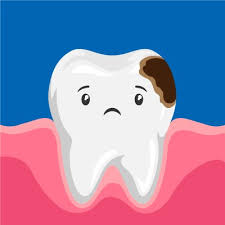A common question we encounter when we diagnose cavities is, “if I have cavities, then why don’t I have any pain?” It is a common misconception that cavities are always painful. In truth, cavities are rarely painful unless they are so large that they reach the nerve of the tooth. The best way to detect cavities in the mouth is not waiting until you experience pain, but rather seeing your dentist frequently for bi-annual check-ups and annual dental x-rays.
Human teeth are made up of three layers: an outer layer of enamel, a middle layer called dentin, and an inner pulpal layer which contains nerves and a blood supply. Dentin is much softer than enamel, so cavities can spread very rapidly once they reach the dentin. Tooth aches typically occur once a cavity infects the nerve-rich pulp of the tooth. When a cavity reaches the pulp, a simple filling is no longer adequate and the tooth requires a more extensive procedure called a root canal.
When we see a cavity on an x-ray, our goal is to stop the spread of decay before it reaches the pulp and requires more invasive treatment. The reason patients typically don’t experience pain with simple cavities is because there is no nerve supply in enamel or dentin. We always strive to stop cavities while they are still small and manageable! Even better, we try to prevent cavities altogether by educating our patients about proper home care and hygiene, managing diet and medications, and regular dental cleanings and examinations. Ask us about what you can do to stop cavities before they start at your next check up!
- Dr. Audrey Miles


